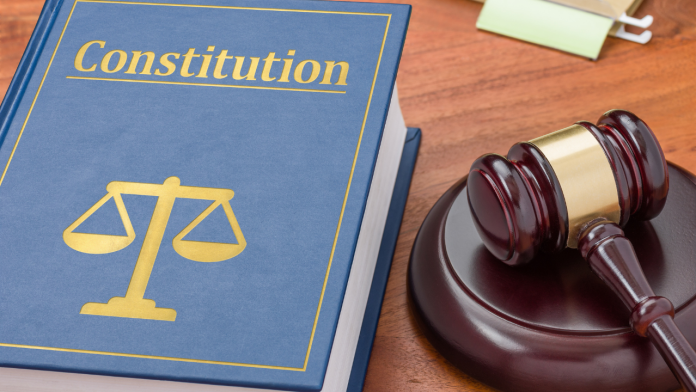How the constitution works: Our legal system, firmly grounded in the principles of democracy and justice, finds its compass in this fundamental document. Let’s set off on a voyage to delve into the core of the constitution and its profound influence on our society.
Introduction
The constitution of a country is often regarded as the fundamental backbone of its legal and political system. It outlines the basic principles, rights, and structure of government, providing the necessary framework for a functioning society. In this article, we will delve into the intricacies of how the constitution works, unraveling its various components, and understanding its vital role in shaping our lives.
Understanding the Constitution
A constitution is essentially a set of fundamental laws, principles, and regulations that a country abides by. It serves as a social contract between the government and its citizens, defining the rights and responsibilities of both parties. Without a constitution, a nation could easily descend into chaos and lawlessness.
The Preamble
At the heart of every constitution is the preamble. This introductory statement encapsulates the spirit and purpose of the constitution. It often begins with the famous words, “We the People,” signifying the collective power of the citizens in shaping the government.
Separation of Powers: A Fundamental Aspect of “How the Constitution Works”
One of the most crucial aspects of a constitution is the concept of separation of powers. This means that the government’s functions are divided into three branches: the executive, legislative, and judicial. Each branch has its own distinct roles and responsibilities, creating a system of checks and balances.
Three Branches of Government and Their Functions in “How the Constitution Works”
- Executive Branch: This branch is responsible for enforcing and administering the laws. It includes the President or Prime Minister and their respective administrations.
- Legislative Branch: The legislative branch is in charge of making and passing laws. In many countries, this is represented by a bicameral legislature, such as a parliament or congress.
- Judicial Branch: The judiciary interprets the laws and ensures that they are in line with the constitution. This branch is headed by the judiciary, with the Supreme Court often being the highest authority.
Checks and Balances
The constitution ensures that no single branch of government becomes too powerful. Each branch has the ability to limit the actions of the other branches, maintaining a delicate equilibrium. This system of checks and balances is vital in preventing abuse of power.
Amending the Constitution: Adapting the Core of “How the Constitution Works”
The constitution is not set in stone and can be amended to adapt to the changing needs of society. The process of amending the constitution is often intentionally complex, requiring a broad consensus to make any changes.
Constitutional Rights and Freedoms
Constitutional rights and freedoms are the cornerstone of a just and fair society. These rights can include freedom of speech, religion, and the right to a fair trial. The constitution safeguards these rights, ensuring that the government does not infringe upon them.
Supreme Court Interpretations: Shaping “How the Constitution Works”
The Supreme Court plays a pivotal role in interpreting and upholding constitutional rights. Landmark cases have set precedents that guide how these rights are applied in practice. The court’s decisions have far-reaching consequences for the nation.
Federal vs. State Powers
The division of powers between the federal and state governments is a key feature of many constitutions. This division outlines what responsibilities are held by the central government and what powers are left to the individual states or regions.
Landmark Constitutional Cases: Impacting “How the Constitution Works”
Throughout history, there have been several landmark constitutional cases that have left an indelible mark on the legal and political landscape. These cases often revolve around contentious issues such as civil rights, discrimination, and the balance between individual liberties and government authority.
Impact on Society
The decisions made based on the constitution have a profound impact on society. They can shape the course of history, influencing social norms, government policies, and the rights of individuals. The constitution is not a static document; it evolves with society’s changing needs.
Conclusion
In conclusion, “How the Constitution Works” is the bedrock of any nation’s legal and political framework. It ensures that the government serves the interests of its citizens while protecting their rights and freedoms. Understanding how the constitution works is crucial for every citizen to actively participate in their nation’s governance.
FAQs
- What is the significance of the preamble in a constitution? The preamble in a constitution sets the tone and purpose of the document, signifying the collective will of the people.
- How does the constitution protect individual rights and freedoms? The constitution safeguards individual rights through a set of legal protections and restrictions on government actions.
- What are checks and balances, and why are they important? Checks and balances ensure that no single branch of government becomes too powerful, maintaining a system of accountability.
- How can the constitution be amended, and why is this process intentionally complex?The amendment process is designed to require broad consensus, preventing frequent and hasty changes to the constitution.
- What is the role of the Supreme Court in interpreting the constitution? The Supreme Court interprets the constitution and ensures that laws and government actions align with its principles and protections.



